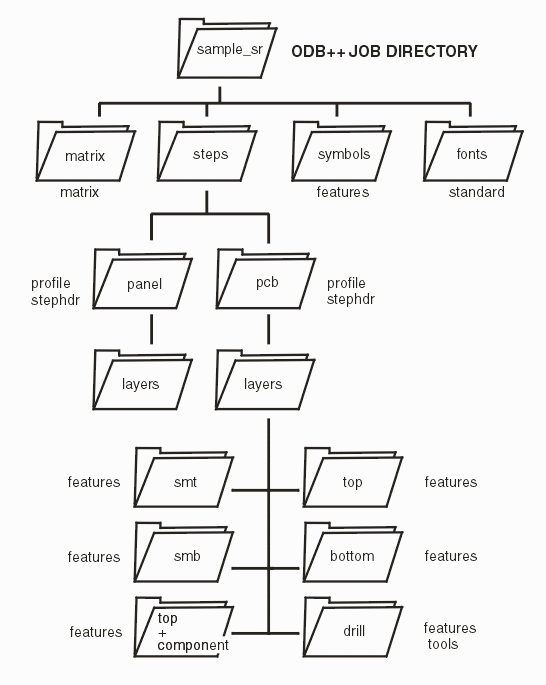Steps
ODB++ Steps are "containers" which essentially describe a multi-layer object - a PCB, a panel outline, a test coupon or similar item. Within the step are various files. Most of these are not of interest in generating artwork except for the layer/feature files.
There must be a minimum of one step folder. However there may be many step folders and a step may reference other steps for the purpose of arraying.
LayersODB++ Steps contain a series of layer folders - each layer folder contains a feature file which lists the actual draws, flashes and surfaces that create the board artwork. |
Sample ODB++ JOB HierarchyIn the tree shown below the ODB++ job has two steps - a PCB which contains a single design of a PCB and a step called panel, which has no features of its own but which references the pcb step in order to produce four images for the panel. 
|
